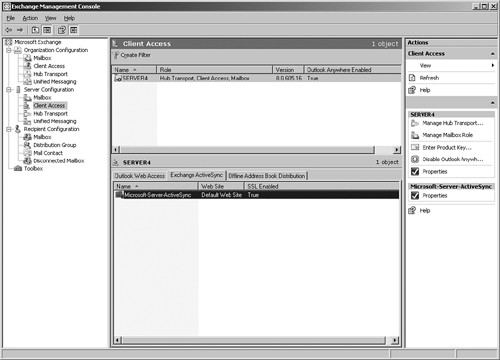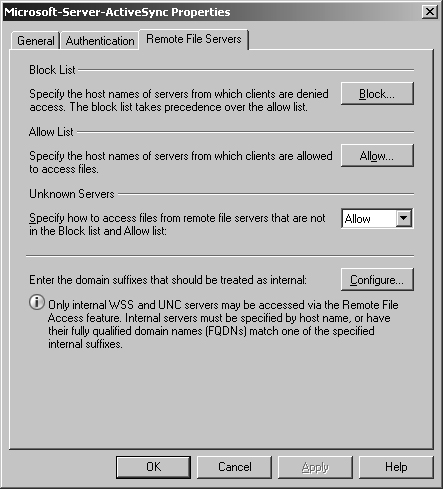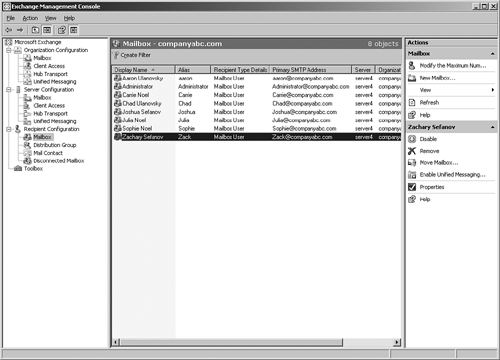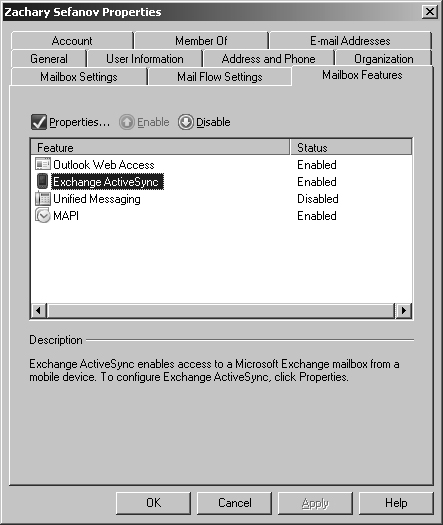Understanding Mobility Enhancements in Exchange Server 2007
Microsoft
Exchange ActiveSync is a technology that allows information workers to
gain access to their messaging data, calendaring, and other information
from a handheld device. ActiveSync works by tunneling the data over
Hypertext Transfer Protocol (HTTP), the same one used for web traffic on
the Internet.
Using ActiveSync in an
Exchange 2007 environment gives organizations unprecedented control over
the management of the remote devices and over their security, allowing
for lost or stolen devices to be wiped, and enforcing policies that require encryption of data and passwords to be used.
Outlining the History of Exchange Mobility Enhancements
ActiveSync was originally
released as an add-on product to Exchange 2000 Server known as Mobile
Information Server (MIS). MIS was the first foray Microsoft had into
syncing handheld devices and saw limited deployment.
Exchange Server 2003
was the first release of the Exchange messaging platform that included
built-in ActiveSync functionality, though it had to be enabled in a
separate step. The first versions of the software in 2003 did not
support automatically pushing emails out to the handhelds, with the
exception of a concept called Always Up to Date
that would notify the device via a short message service (SMS) text
message. The device would then dial in and sync. This was time and
battery consuming and costly.
Service Pack 2 for
Exchange Server 2003 introduced the concept of Direct Push technology,
similar to BlackBerry style technology, where messages were
automatically pushed out to a handheld as they were received. This
improvement was warmly received.
At the same time,
Windows Mobile, the handheld operating system formerly known as Windows
CE and PocketPC, was evolving. The Messaging Security and Feature Pack
(MSFP) for Windows Mobile 5.0 allowed for built-in, file-level
encryption for the devices, and integrated them with 2003 SP2’s
abilities to provision and deprovision devices over the air.
Exchange Server
2007 expands even further beyond 2003 SP2’s Direct Push technology,
allowing for other improvements, such as the ability to automatically
configure a handheld, encrypt connections, reset passwords, and view
file data on a SharePoint server.
Exploring Exchange ActiveSync
Exchange ActiveSync is a
service that runs on a client access server (CAS) in an Exchange 2007
topology. It uses the same virtual server that other HTTP access methods
to Exchange use, such as Outlook Web Access and Outlook Anywhere. In
ActiveSync’s case, however, it uses its own virtual directory, named
Microsoft-Server-ActiveSync.
Because it uses the
same type of access mechanism as Outlook Web Access (OWA) does,
ActiveSync can be designed using the same CAS considerations that OWA
and Outlook Anywhere
does. In most cases, it is deployed as an ancillary service to these
offerings. In any case, when it is deployed, it becomes a vital service
to the organization.
Enabling ActiveSync in Exchange Server 2007
In Exchange 2007
ActiveSync, the application itself has become more integrated with the
rest of Exchange functionality. After the CAS role has been assigned to a
server, the server is closely positioned to enable ActiveSync support.
That said, several configuration steps can be taken to improve and
streamline ActiveSync access, per Microsoft best practices.
Working with ActiveSync Settings in the Exchange Management Console
Many of the
ActiveSync settings on a CAS can be modified within the Exchange
Management Console, from the Client Access node, as shown in Figure 1.
The console allows for ActiveSync to be disabled, or for individual
ActiveSync settings to be modified on individual recipient mailboxes.

Right-clicking on the
Microsoft-Server-ActiveSync listing in the details pane and choosing
Properties allows for several other ActiveSync settings to be modified,
such as the following:
External url—
This setting allows an administrator to enter in the fully qualified
domain name (FQDN) that will be used to access ActiveSync from the
Internet. An example of this is http://mail.companyabc.com/Microsoft-Server-ActiveSync.
Authentication—
Authentication methods for the ActiveSync virtual directory can be
entered here. This tab allows an administrator to configure the server
to use Basic authentication, which is commonly used with Secure Sockets
Layer (SSL) encryption. There is also an option to define whether
dual-factor authentication using client certificates is required or
accepted.
Remote File Servers— This tab, shown in Figure 2,
introduces some of the new functionality in Exchange 2007 in regard to
Windows Mobile access to file data in shares via Universal Naming
Convention (UNC) paths, or on Windows SharePoint Services Sites.

Note
The functionality on
the Remote File Servers tab can only be taken advantage of if the
Windows Mobile device supports it. Currently, only the 6.0 version of
the product supports this functionality.
Configuring Per-User ActiveSync Settings
Individual
mailbox settings can be configured for ActiveSync in the Mailbox node
under Recipient Configuration in the console pane, shown in Figure 3.
Enabling and disabling ActiveSync on an individual mailbox can be
controlled from here, as well as the ability to add a mailbox to a
specific ActiveSync mailbox policy.

Right-clicking on an
individual mailbox and choosing Properties invokes the Properties dialog
box. Choosing the Mailbox Features tab, shown in Figure 4,
allows for Exchange ActiveSync to be enabled or disabled for that
particular mailbox. In addition, clicking the Properties button gives
the option to join the mailbox to a specific ActiveSync policy, as
mentioned earlier.
